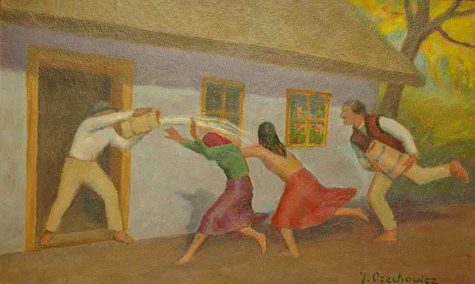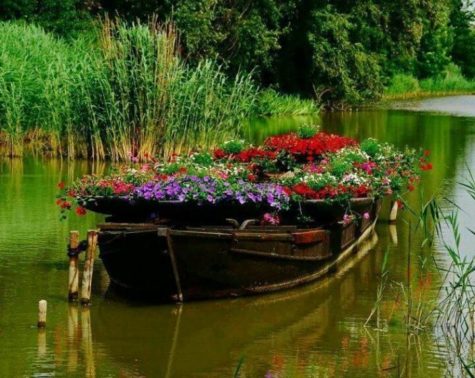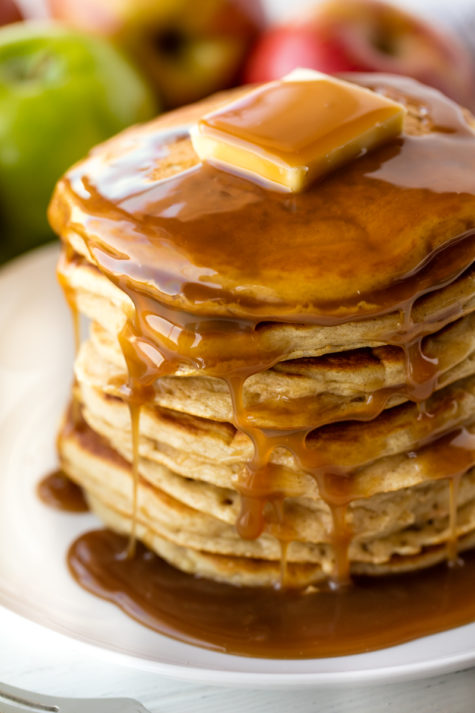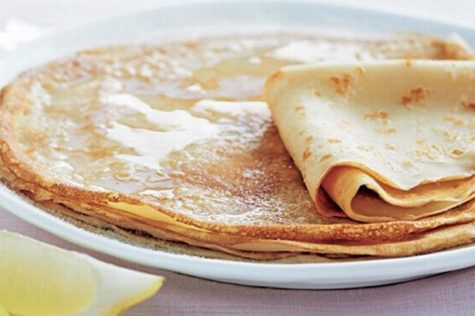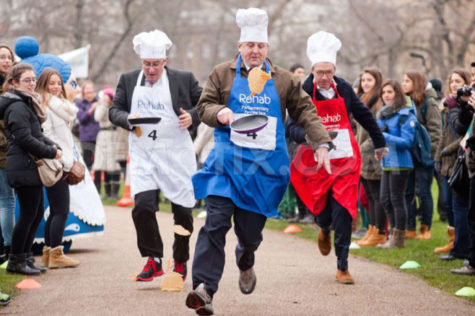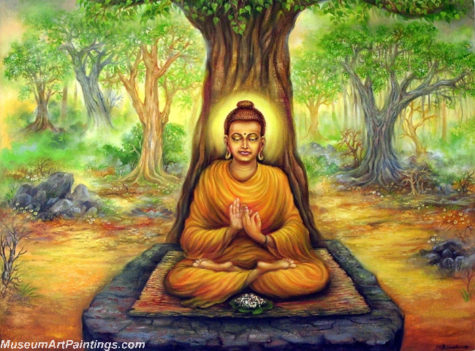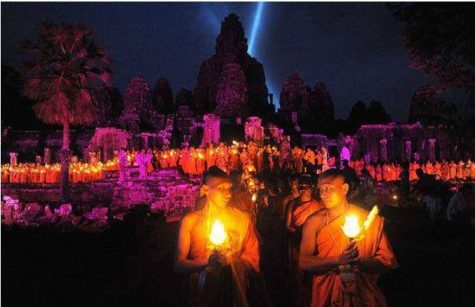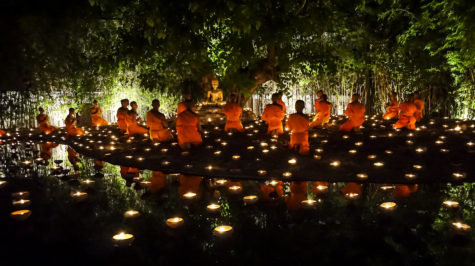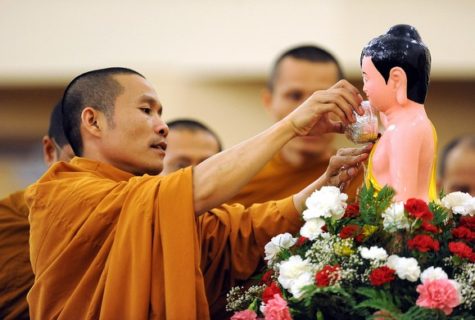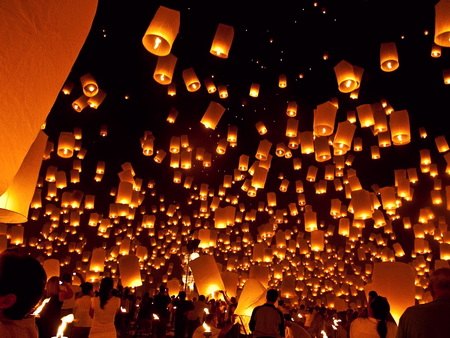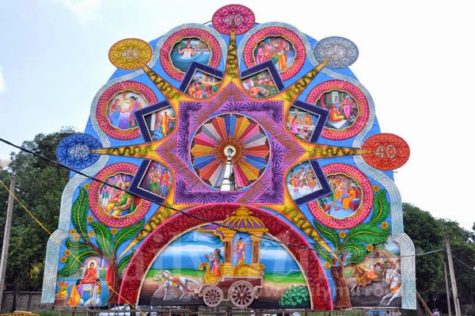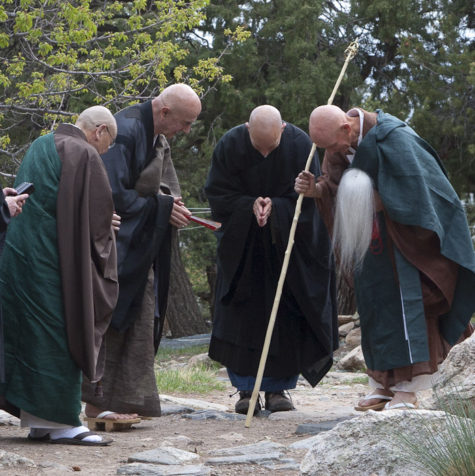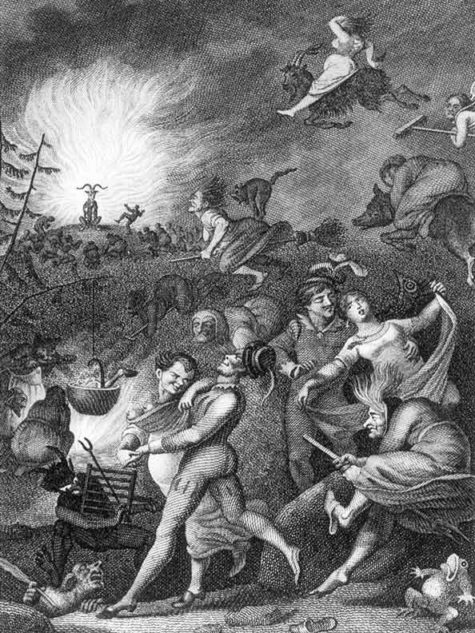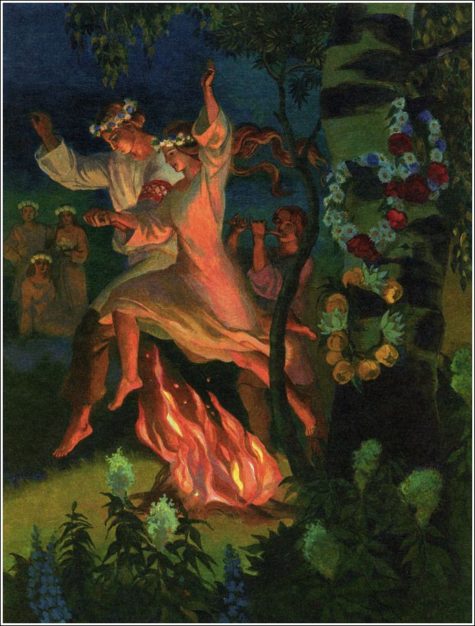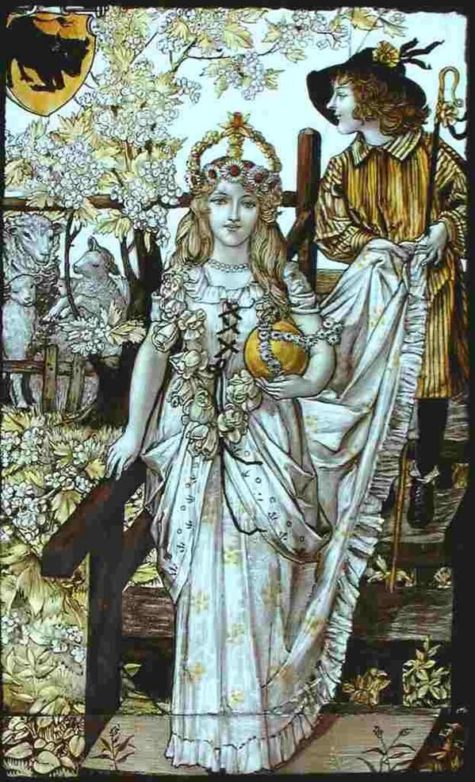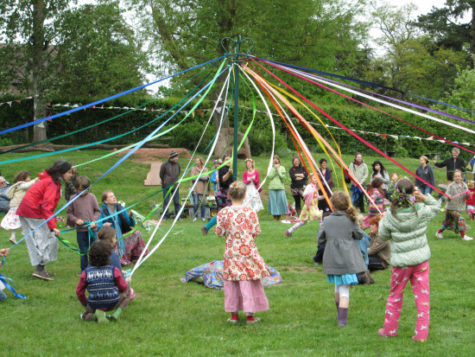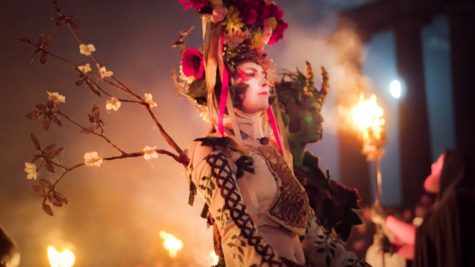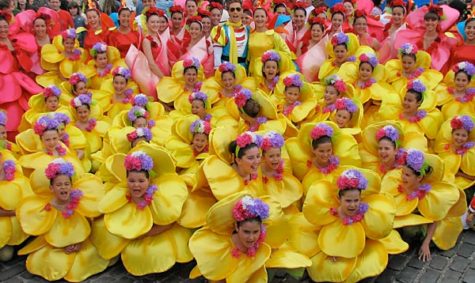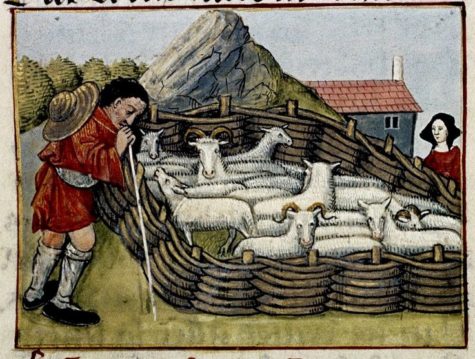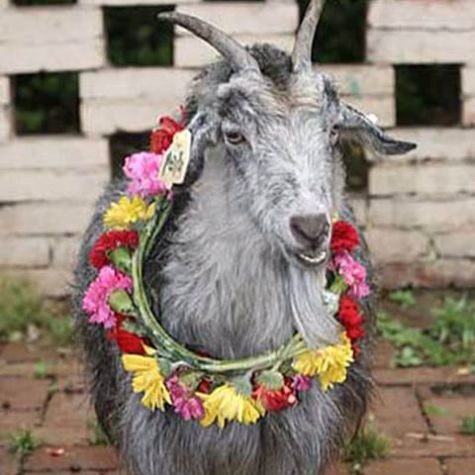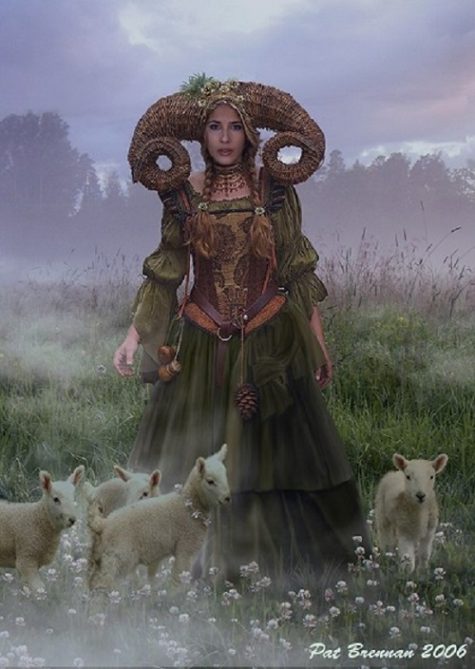April
The spirit of Poland’s Dyngus is captured in this description from the Poznan region during 1800s:
Poland’s Dyngus, or Smigus, Day is said to hark back to the baptism of the founder of Polish Christianity, Prince Mieszko I (c. 935 – 992), and his entire court, on Easter Monday, 966. Dyngus is an ancient celebration which is still observed both in country villages and the big cities, with singing, pranks, visiting friends’ houses, and the custom of dousing.
The custom of pouring water is an ancient spring rite of cleansing, purification, and fertility – at this time of year there are drenching customs enacted in Sri Lanka and Thailand during their respective New Year celebrations. In a Spring custom of pagan (pre-Christian Slavic) times, the Poles ‘confronted’ (dingen) Nature with their pouring of water and switching with pussy willows to purify themselves for the year ahead. The alternative name for the day comes from smiganie, meaning ‘switching’.
(Boys, don’t do this at home.) On Easter Monday, at around 5 am, the men creep through a neighbour’s window or chimney, often with the collusion of the male family head, into the rooms where the sleeping womenfolk are abruptly awakened by being doused with water. The girls, naturally enough, reciprocate in kind. In cities, where people are refined and perhaps girls more aware, this custom tends to be practised by the use of a sprinkle of water or cologne.
In the first recorded Polish writing on Dyngus Day; a medieval Polish historian wrote of what he termed the Oblewania.
Barely had the day dawned on Easter Monday when I woke the boys and gathered some water to start throwing it on the girls. Up with the Piwezyny! (eiderdown)! There was screaming, shouting, and confusion. The girls are shrieking and hollering, but in their hearts they are glad because they know that she who isn’t gotten wet will not be married that year. And the more they are annoyed, the more we dump water on them calling, Dyngus – Smigus! Then we had to change our clothes because there wasn’t a dry thread on the girls and we boys were not better off.
Source Unknown
Earth Day is a name used for two similar global observances. While some people celebrate Earth Day around the time of the Vernal Equinox, others observe the occasion on April 22 each year.
Earth Day aims to inspire awareness of and appreciation for earth’s environment. Typical ways of observing Earth Day include planting trees, picking up roadside trash, conducting various programs for recycling and conservation, using recyclable containers for snacks and lunches. Some people are encouraged to sign petitions to governments, calling for stronger or immediate action to stop global warming and to reverse environmental destruction. Television stations frequently air programs dealing with environmental issues.
Symbols used by people to describe Earth Day include: an image or drawing of planet earth; a tree, a flower or leaves depicting growth; or the recycling symbol. Colors used for Earth Day include natural colors such as green, brown or blue.
Note:
This observance arose from an interest in gathering national support for environmental issues. In 1970, San Francisco activist John McConnell and Wisconsin Senator Gaylord Nelson separately asked Americans to join in a grassroots demonstration. McConnell chose the spring equinox (March 21, 1970) and Nelson chose April 22. Millions of people participated, and today Earth Day continues to be widely celebrated with events on both dates.
The Chinese Dragon Boat Festival was held on the Full Moon in April. There was a procession of decorated boats up and down the rivers and lakes in the moonlight. Everyone participated, for they believed that this pleased the dragons who brought life-energies to the community. They would throw flowers into the water to carry their blessings and wishes.
To the Chinese, dragons were not loathsome creatures to be avoided, but rather wise, powerful beings who could help in many ways. Dragon-lovers of today realize the same thing and court their friendship. Dragons are powerful allies. This is an excellent time to bless boats, whether or not they are decorated as dragons. The ancients said that each boat had a spirit built into it, and if that spirit were dissatisfied or angry, the boat would not handle properly in the wind and waves.
If you have a boat, large or small, consider using a boat blessing ritual to improve its safety and performance. If you don’t have a boat, this ritual can also be used to bless cars, bikes, motorcycles, or whatever you use for transportation.
Note:
Dates for this festival vary widely from year to year, and from region to region. Most generally the dates given are either in May or in June.
From: Moon Magick
Different countries and cultural traditions have different names for this day. Popular names include Pancake Day or Pancake Tuesday, Mardi Gras, Tłusty Czwartek, Fasnacht Day, Tuesday of Carnival, Fat Tuesday, and Shrove Tuesday. Shrove Tuesday is the last day of Shrovetide.
Pancake Tuesday always falls 47 days before Easter Sunday, so the date varies from year to year and falls between February 3 and March 9. In 2019 Pancake Tuesday will fall on March 5th.
During Lent, which begins the next day (Ash Wednesday), rich foods are not eaten; therefore the day before pancakes, donuts and other treats are cooked to use up the ingredients in the house. Pancake Tuesday was the last opportunity to use up eggs and fats before embarking on the Lenten fast and pancakes are the perfect way of using up these ingredients.
Pancakes are eaten with a sprinkling of sugar, and they are served with syrup. The day celebrated by excessive pancake devouring is observed in the United Kingdom, Ireland, Australia, Canada, Denmark, France, Poland, Sweden, and in parts of the United States.
Today just might be the perfect day to take a look at the following posts about pancakes:
What are pancakes?
A pancake is a thin, flat cake, made of batter and fried in a frying pan. A traditional English pancake is very thin and is served immediately. Golden syrup or lemon juice and caster sugar are the usual toppings for pancakes.
The pancake has a very long history and featured in cookery books as far back as 1439. The tradition of tossing or flipping them is almost as old: “
And every man and maide doe take their turne,
And tosse their Pancakes up for feare they burne.”
~Pasquil’s Palin, 1619.
The ingredients for pancakes can be seen to symbolize four points of significance at this time of year:
- Eggs ~ Creation
- Flour ~ The staff of life
- Salt ~ Wholesomeness
- Milk ~ Purity
To make 8 or so pancakes you will need the following:
- 8oz plain flour,
- 2 large eggs,
- 1 pint milk,
- salt.
Mix all together and whisk well. Leave to stand for 30 minutes. Heat a little oil in a frying pan, pour in enough batter to cover the base of the pan and let it cook until the base of the pancake has browned. Then shake the pan to loosen the pancake and flip the pancake over to brown the other side.
Pancake Races
In the UK, pancake races form an important part of the Shrove Tuesday celebrations – an opportunity for large numbers of people, often in fancy dress, to race down streets tossing pancakes. The object of the race is to get to the finishing line first, carrying a frying pan with a cooked pancake in it and flipping the pancake as you run.
The most famous pancake race takes place at Olney in Buckinghamshire. According to tradition, in 1445 a woman of Olney heard the shriving bell while she was making pancakes and ran to the church in her apron, still clutching her frying pan. The Olney pancake race is now world famous. Competitors have to be local housewives and they must wear an apron and a hat or scarf.
Each contestant has a frying pan containing a hot pancake. She must toss it three times during the race. The first woman to complete the course and arrive at the church, serve her pancake to the bellringer and be kissed by him, is the winner.
At Westminster School in London, the annual Pancake Grease is held. A verger from Westminster Abbey leads a procession of boys into the playground where the school cook tosses a huge pancake over a five-metre high bar. The boys then race to grab a portion of the pancake and the one who ends up with the largest piece receives a cash bonus from the Dean.
Source: Historic UK
This is the holiest day of all Buddhist days marking the birth, enlightenment and nirvana of the Lord Buddha. It is celebrated on many different dates, and in many different ways all over the world.
In many east Asian countries Buddha’s Birth is celebrated on the 8th day of the 4th month in the Chinese lunar calendar (in Japan since 1873 on April 8 of the Gregorian calendar), and the day is an official holiday in Hong Kong, Macau, and South Korea. The date falls from the end of April to the end of May in the Gregorian calendar.
In Nepal:
In Nepal, Buddha’s birthday is celebrated on the full moon day of May. In 2017, the holiday occurs on May 10. The festival is known by various names, Buddha Jayanti, Buddha Purnima, Vaishakh Purnima and Vesak. Purnima means full moon day in Sanskrit. Among the Newars of Nepal, the festival is known as Swanya Punhi, the full moon day of flowers. The day marks not just the birth of Shakyamuni Gautam Buddha but also the day of his Enlightenment and Mahaparinirvana. But as a gentle effect of the West, the event of the birth is given paramount importance.
The event is celebrated by gentle and serene fervor, keeping in mind the very nature of Buddhism. People, especially women, go to common Viharas to observe a rather longer-than-usual, full-length Buddhist sutra, as something like a service. The usual dress is pure white. Kheer, a sweet rice porridge is commonly served to recall the story of Sujata, a maiden who, in Gautama Buddha’s life, offered the Buddha a bowl of milk porridge after he had given up the path of asceticism following six years of extreme austerity. This event was one major link in his enlightenment.
It is said that the Buddha originally followed the way of asceticism to attain enlightenment sooner, as was thought by many at that time. He sat for a prolonged time with inadequate food and water, which caused his body to shrivel so as to be indistinguishable from the bark of the tree that he was sitting under. Seeing the weak Siddhartha Gautama, a girl named Sujata placed a bowl of milk in front of him as an offering. Realising that without food one can do nothing, the Buddha refrained from harming his own body.
In India:
The birth of Buddha or Tathagata is celebrated in India, especially in Sikkim, Ladakh, Arunachal Pradesh, Bodh Gaya, various parts of North Bengal such as Kalimpong, Darjeeling, and Kurseong, and Maharashtra (where 6% of total population are Buddhists) and other parts of India as per Indian calendar. The day is celebrated much the same way as in Nepal.
In Thailand:
Visakha Puja, the year’s greatest religious holiday, which commemorates the Buddha’s birth, enlightenment and death, comes during seeding and plowing. This is the holiest day of all Buddhist days marking the birth, enlightenment and nirvana of the Lord Buddha.
Buddhists will make merits and attend sermons at the temples (Wat). In the evening, Buddhist monks lead the laity in a magnificent candle-light triple circumambulation of Buddhist chapels throughout the country.Village elders attend temple celebrations and sermons during the day.
Those who have been working all day in the fields return at dusk to join the lovely candle or torchlit procession that circumambulates the temple chapel three times. Enacted in every village, town and city Wat (temple), each person carries flowers, three glowing incense sticks and a lighted candle in silent homage to the Buddha, his teaching and his disciples.
In Japan:
In Japan, Buddha’s birth is also celebrated according to the Buddhist calendar but is not a national holiday. On this day, all temples hold Kanbutsu-e or Hana-matsuri, meaning ‘Flower Festival’. The first event was held at Asuka-dera in 606.
Japanese people pour ama-cha (a beverage prepared from a variety of hydrangea) on small Buddha statues decorated with flowers, as if bathing a newborn baby.
In Korea:
Lotus Lantern Festival celebrating Buddha’s Birthday, is celebrated in South Korea according to the Lunisolar calendar. This day is called Seokga tansinil, meaning “Buddha’s birthday” or Bucheonim osin nal meaning “the day when the Buddha came.”.
Lotus lanterns cover the entire temple throughout the month which are often flooded down the street. On the day of Buddha’s birth, many temples provide free meals and tea to all visitors. The breakfast and lunch provided are often sanchae bibimbap.
In Sri Lanka:
This is one of the major festivals in Sri Lanka. It is celebrated on the first full moon day of the month of May. People engage in religious observances and decorate houses and streets with candles and specially made paper lanterns. some stores give out free meals for people.
In specific places, there are buildings made out of light bulbs but from a distance it represents pictures from the Buddha’s life. They are called vesak thorun (Pandals). People sing songs called “bhakthi geetha”.
United States:
Among the many practicing Buddhists in the United States, Buddha’s Birthday (Hana-Matsuri) is widely celebrated on April 8 of the standard Gregorian calendar.
In 1968 on April 8 in the California Bay Area, the first circumambulation of Mt. Tamalpais to celebrate Buddha’s Birthday was conducted. The director of the Esalen at Stanford program designed a leaflet and had it distributed to all universities in the Bay Area. Some brought sleeping bags and slept overnight in Muir Woods to enable an early start up the Dipsea Trail.
For the several hundred people involved, it was an unforgettable day clear, sunny, calm, and somewhat warm. Gary Snyder, Allen Ginsberg, and Philip Whalen were there. Taught by Gary and Allen, we chanted a different mantra at every station of the clockwise circumambulation. We all stopped for lunch on a sunny hillside. Allen brought miso for lunch, and he passed it around for others to enjoy.
Starting in 1969 on April 8 (and into the 1970s) at Tassajara Zen Mountain Center, Hana-Matsuri was celebrated each spring. Dressed in formal black robes, the roughly 70 monks and students formed a formal procession to the Horse Pasture with the leader periodically ringing a small, clear bell.
A temporary stone altar was built under a huge oak tree in a gorgeous field of green grass and abundant wildflowers; a small statue of a baby Buddha was placed upon it in a metal basin. Then each person would in turn approach the altar, ladle one thin-lipped bamboo dipperful of sweet green tea over the statue, bow, and walk to one side. How haunting and mysterious – the juxtaposition of formality, ritual and wild Nature.
Other countries:
Some places have a public holiday one week later, on the fifteenth day of the fourth month in the Chinese Lunar Calendar, to coincide with the full moon. The names for this festival vary with each country, for instance Visakha Puja in Thailand or Lễ Phật đản in Vietnam. In some countries it is a public holiday, in others it is not.
In Germany, Walpurgisnacht (or Hexennacht, meaning witches´ night), the night from April 30 (May eve), is the night when allegedly the witches hold a large celebration on the Blocksberg (the highest of the Harz Mountains of north central Germany) hold revels with their Gods, and await the arrival of Spring.
In some parts of northern coastal regions of Germany, the custom of lighting huge Beltane fires is still kept alive, to celebrate the coming of May, while most parts of Germany have a derived christianized custom around Easter called “Easter fires”.
In rural parts of southern Germany it is part of popular youth culture to go out on Walburgisnacht to play pranks on other people, like messing up someone’s garden, hiding stuff or spraying messages on other people’s property. Sometimes these pranks go too far and may result in serious willful damage to property or bodily injury.
Walpurgis (sw: Valborg) is one of the main holidays during the year in both Sweden and Finland, alongside Christmas and Midsummer. The forms of celebration in Sweden vary in different parts of the country and between different cities. One of the main traditions in Sweden is to light large bonfires, a custom which is most firmly established in Svealand, and which began in Uppland during the 18th century. An older tradition from Southern Sweden was for the younger people to collect greenery and branches from the woods at twilight, which were used to adorn the houses of the village. The expected reward for this task is to be paid in eggs.
Today in Finland, Walpurgis Night (Vapunaatto) is, along with New Year’s Eve, the biggest carnival-style festivity that takes place in the streets of Finland’s towns and cities. The celebration is typically centered on plentiful use of sparkling wine and other alcoholic beverages. The student traditions are also one of the main characteristics of “Vappu“. From the end of the 19th century, “Fin de Siècle“, and onwards, this traditional upper class feast has been co-opted by students attending university, already having received their student cap. Many people who have graduated from lukio wear the cap.
One tradition is drinking sima, whose alcohol content varies. Fixtures include the capping of the Havis Amanda, a nude female statue in Helsinki, and the biannually alternating publications of ribald matter called Äpy and Julkku. Both are sophomoric; but while Julkku is a standard magazine, Äpy is always a gimmick. Classic forms have included an Äpy printed on toilet paper and a bedsheet. Often the magazine has been stuffed inside standard industrial packages such as sardine-cans and milk cartons. The festivities also include a picnic on May 1st, which is sometimes prepared in a lavish manner.
The Finnish tradition is also a shadowing of the Soviet Era May Day parade. Starting with the parties of the left, the whole of the Finnish political scene has nominated Vappu as the day to go out on stumps and agitate. This does not only include right-wing parties, but also others like the church have followed suit, marching and making speeches.
In Sweden it is only the labor and socialist parties which use May 1 for political activities, while others observe the traditional festivities. The laborers who were active in the 1970’s still party on the first of May. They arrange carnivals and the radio plays their old songs that workers liked to listen to. The labor spirit lies most in the capital of Finland, Helsinki.
The First of May is also a day for everything fun and crazy: children and families gather in market places to celebrate the first day of the spring and the coming summer. There are balloons and joy, people drink their first beers outside, there are clowns and masks and a lot of fun. The first of May includes colorful streamers, funny and silly things and sun. The first of May means the beginning of the spring for many people in Finland.
Traditionally May 1st is celebrated by a picnic in a park (Kaivopuisto in the case of Helsinki). For most, the picnic is enjoyed with friends on a blanket with good food and sparkling wine. Some people, however, arrange extremely lavish picnics with pavilions, white table cloths, silver candelabras, classical music and lavish food. The picnic usually starts early in the morning, and some hard-core party goers continue the celebrations of the previous evening without sleeping in between. Some Student organisations have traditional areas where they camp every year and they usually send someone to reserve the spot early on. As with other Vappu traditions, the picnic includes student caps, sima, streamers and balloons
The tradition which is most widespread throughout the country is probably singing songs of spring. Most of the songs are from the 19th century and were spread by students’ spring festivities. The strongest and most traditional spring festivities are also found in the old university cities, like Uppsala and Lund where both current and graduated students gather at events that take up most of the day from early morning to late night on April 30, or “sista April” (“The last day of April”) as many people call it. There are also newer student traditions like the carnival parade, The Cortège, which has been held since 1909 by the students at Chalmers in Gothenburg. In Sweden, Valborg is especially notorious because of the excessive amounts of alcohol people consume on that day.
Found at: Nation Master
The first of May is Beltane or May Day, a time to celebrate the leaping fires of passion. Traditionally celebrated on April 30, (May eve), it marks the height of spring and the flowering of all life. Beltane is a festival of sensuality, sexuality, flowers and delight. It is a traditional time to make love, preferably outdoors.
Beltane is the time when fairies return from their winter rest, carefree and full of mischief and delight. On the night before Beltane, in times past, folks would place rowan branches at their windows and doors for protection. If you do not wish the fairies to visit, do the same! This is also a perfect time for night or predawn rituals to draw down power to promote fertility in body and mind.
At Beltane, the Pleiades star cluster rises just before sunrise on the morning horizon. The Pleiades is known as the seven sisters, and resembles a tiny dipper-shaped pattern of six moderately bright stars in the constellation of Taurus, near the shoulder. Watch for it low in the east-northeast sky, just a few minutes before sunrise.
There are many lovely old customs associated with this time. Here are some simple ideas for celebrating this wild red time of year:
- Make a garland or wreath of freshly picked flowers and wear it in your hair.
- Dress in bright colors, especially hot pink or crimson, the traditional colors of Beltane, or wear green all day (and nothing all night!)
- Hang fruits and baked goodies from trees and bushes for later feasting.
- Build a Beltane fire: leap over it to cleanse yourself, or state your desires and let the fire carry them upward.
- Leap over your garden rows (or house plants), sharing joyous energy.
- Make a ‘May gad’: peel a willow-wand and twine cowslips or other flowers around it.
- Throw a May Day party and feast on May wine and food till the dawn. Turn a broomstick into a maypole and see how many people you can get to dance round it.
- Make love in the woods, in your garden, outside – at night.
- Watch the sunrise. Pack a picnic breakfast, a blanket, and some sweaters; and head out before dawn. Unpack your picnic on a hill with an unobstructed view and enjoy the early morning rays as the sun peaks over the horizon.
- Make a flower feast! Freeze edible flowers in your ice cubes. Add edible flowers to your salad. Candy flowers to decorate your dessert.
- Make a May basket. Fill it with flowers, food, ribbons, and fun. Leave it on a doorstep of a lover or friend, or someone who cannot get outside, such as an invalid or elderly person.
- Make a daisy chain and cast it into one of the lakes to please the water spirits.
- Rise at dawn on May Day and wash in the morning dew: The woman who washes her face in it will be beautiful, the man who washes his hands will be skilled at knots and nets (always a useful skill for students).
- Twist a Rowan sprig into a ring and look through it- tonight is one of the three in the year when the uninitiated can see the faeries.
- Create a May Day altar with a mirror, a small maypole, a phallic shaped candle, a daisy chain and springtime flowers.
- Light a fire or candle on the top of a hill and make a wish as you jump over it (for authenticity, you can try this sky clad, it would also be amusing for any passing late-night dog walkers!)
- Perfume your house with delicate scent of woodruff, a tiny, star-like flower that blooms around this time in the Northern Hemisphere.
- Embrace the ones you love. Hugs and kisses all around.
Holidays are days made holy by the attention we pay them. Simple practices such as the ones listed above remind us that we too dance to the natural rhythms of the earth.
Honor The May Queen
Make an offering of a floral crown, or a libation of honey and milk, to the Queen of the May during your Beltane prayers.
The leaves are budding across the land
on the ash and oak and hawthorn trees.
Magic rises around us in the forest
and the hedges are filled with laughter and love.
Dear lady, we offer you a gift,
a gathering of flowers picked by our hands,
woven into the circle of endless life.
The bright colors of nature herself
blend together to honor you,
Queen of spring,
as we give you honor this day.
Spring is here and the land is fertile,
ready to offer up gifts in your name.
we pay you tribute, our lady,
daughter of the Fae,
and ask your blessing this Beltane.
Make A Maypole for Beltane
This isn’t as difficult as you might think. Purchase a twenty foot wood pole from your local hardware store, or make a shorter one with a yardstick, broomstick, or even a twig. Set it up in your backyard.
Invite a group of friends, and ask each one to bring a 2 inch by 20 foot length of brightly colored ribbon (or whatever the length of your pole). Alternatively, you could provide ribbons of various colors. At the top of the pole affix the different colored ribbons – one for each person.
When your guests have assembled, have them each choose a ribbon and make a wish upon it.(For example, “I choose this red ribbon for more passion in my life.”) Everyone grabs their ribbon, and the dancing begins. (Make sure to have extra ribbons just in case!) Dance around the Maypole entwining your ribbons together. And then feast on May wine and food till the dawn.
More About Beltane
For the Celts, Beltane marked the beginning of the pastoral summer season when the herds of livestock were driven out to the summer pastures and mountain grazing lands. In modern Irish, Mí na Bealtaine (‘month of Bealtaine’) is the name for the month of May. The name of the month is often abbreviated to Bealtaine, with the festival day itself being known as Lá Bealtaine. The lighting of bonfires on Oidhche Bhealtaine (‘the eve of Bealtaine’) on mountains and hills of ritual and political significance was one of the main activities of the festival.
Beltane is a cross-quarter day, marking the midpoint in the Sun’s progress between the vernal equinox and summer solstice. Since the Celtic year was based on both lunar and solar cycles, it is possible that the holiday was celebrated on the full moon nearest the midpoint between the vernal equinox and the summer solstice. The astronomical date for this midpoint is closer to May 5 or May 7, but this can vary from year to year.
In Irish mythology, the beginning of the summer season for the Tuatha Dé Danann and the Milesians started at Bealtaine. Great bonfires would mark a time of purification and transition, heralding in the season in the hope of a good harvest later in the year, and were accompanied with ritual acts to protect the people from any harm by Otherworldly spirits, such as the Sídhe.
Like the festival of Samhain, opposite Beltane on Oct. 31, Beltane was a time when the Otherworld was seen as particularly close at hand. Early Gaelic sources from around the 10th century state that the druids of the community would create a need-fire on top of a hill on this day and drive the village’s cattle through the fires to purify them and bring luck (Eadar dà theine Bhealltainn in Scottish Gaelic, ‘Between two fires of Beltane’).
In Scotland, boughs of juniper were sometimes thrown on the fires to add an additional element of purification and blessing to the smoke. People would also pass between the two fires to purify themselves. This was echoed throughout history after Christianization, with lay people instead of Druid priests creating the need-fire.
The festival persisted widely up until the 1950s, and in some places the celebration of Beltane continues today. A revived Beltane Fire Festival has been held every year since 1988 during the night of 30 April on Calton Hill in Edinburgh, Scotland and attended by up to 15,000 people (except in 2003 when local council restrictions forced the organizers to hold a private event elsewhere).
Wiccans and Wiccan-inspired Neopagans celebrate a variation of Beltane as a sabbat, one of the eight solar holidays. Although the holiday may use features of the Gaelic Bealtaine, such as the bonfire, it bears more relation to the Germanic May Day festival, both in its significance (focusing on fertility) and its rituals (such as maypole dancing). Some Wiccans celebrate ‘High Beltaine’ by enacting a ritual union of the May Lord and Lady.
~Information from various sources including Paganwiccan
The Romans had a celebration for just about everything. Certainly, any deity worth their salt got a holiday of their own, and Flora was no exception. She was the goddess of spring flowers and vegetation, and one of many fertility goddesses. In fact, she was so well respected as a fertility deity that she was often seen as a the patron deity of Roman prostitutes.
Her holiday originated around 235 b.c.e. It was believed that a good festival ensured that Flora would protect the blooming flowers around the city. However, at some point the celebration was discontinued — but it clearly took its toll when wind and hail did some serious damage to the flowers of Rome. In 173 b.c.e., the Senate reinstated the holiday, and renamed it the Ludi Floralis, which included public games and theatrical performances.
The Floralia took place during the five days between April 28 and May 3. Citizens celebrated with drinking and dancing. Flowers were everywhere, in the temples and on the heads of revelers. Anyone making an offering to Flora might give her a libration of milk and honey.
source: PaganWiccan
Oats and oat cakes are still used today in Beltane celebrations, especially in Scotland where the tradition originated. Therefore, oats have been widely accepted as a very appropriate Beltane food, good for fertility and luck. This recipe for Farls, was popular in northern Ireland and Scotland, incorporating the ever-popular potatoes as well (with the oats!). Best of all, it’s gluten free!
Ingredients:
- 3 cups real mashed potatoes
- 2 cups dry oats
- 2 tablespoons butter or margarine
- 1/2 teaspoon cornstarch
- 1/2 teaspoon baking powder
- 1/8 teaspoon salt
- Pinch of pepper
- Pinch of rosemary (optional)
Directions:
Soak the oats in warm water for 15 to 20 minutes. (Use the amount of water your oats package tells you to use as if for cooking.) Drain the oats if there is extra water at the end of their soaking, then mix the potatoes and other ingredients into the bowl. Knead it together until a dough forms. If it’s still too moist, add flour until it can be picked up and shaped. Form into round patties. Fry in hot vegetable oil until lightly browned and serve immediately.
NOTE:
They seem to cook best if you put them in the pan and don’t smush them down with the spatula on their first side. When you flip them over, that’s when you can smush them down a little, because they’ve got a cooked surface that won’t get stuck to your spatula.
Yield: 8 servings
Source: Sabbats
Also called The Parilia, this festival is dedicated to the Another festival to Pales, goddess of herds. In ancient Roman religion, Pales was a deity of shepherds, flocks and livestock. Regarded as male by some sources and female by others, Pales can be either singular or plural in Latin, and refers at least once to a pair of deities.
During these festivals, ritualistic cleansing of sheep/cattle pens and animals would take place. There are two dates for this festival, one is April 21, and the other on July 7. The festival in April was for smaller livestock, while the one in July was for larger animals.
The festival, basically a purification rite for herdsmen, beasts, and stalls, was at first celebrated by the early kings of Rome, later by the pontifex maximus, or chief priest.
The Vestal Virgins opened the festival by distributing straw and the ashes and blood of sacrificial animals. Ritual cleaning, anointment, and adornment of herds and stalls followed, together with offerings of simple foods.
Shepherds swept out the pens and smudged the animals and pens with burning sulfur. In the evening, the animals were sprinkled with water, and their pens were decorated with garlands. Fires were started, and in were thrown olives, horse blood, beanstalks without pods, and the ashes from the Fordicalia fires. Men and beasts jumped over the fire three times to purify themselves further, and to bring them protection from anything that might harm them (wolves, sickness, starvation, etc.). After the animals were put back into their pens the shepherds would offer non-blood sacrifices of grain, cake millet, and warm milk to Pales.
Another description of this Festival from Nova Roma is as follows:
The Parilia is both an ancient agricultural festival sacred to Pales and the birthday of Eternal Roma Herself. The sheep-fold is decorated with greenery and a wreath placed on its entrance. At first light the fold is scrubbed and swept, and the sheep themselves are cleansed with sulfur smoke. A fire is made of olive and pine wood, into which laurel branches are thrown; their crackling is a good omen. Offerings are made of cakes of millet, other food, and pails of milk.
A prayer is then said four times to Pales (while facing east), seeking protection and prosperity for the shepherd and his flocks, forgiveness for unintentional transgressions against Pales, and the warding off of wolves and disease. The shepherd then washes his hands with dew. Milk and wine is heated and drunk, and then he leaps through a bonfire (and possibly his flocks as well).
Day of Pales Ritual
From the Pagan Book of Hours, we have a modern day ritual for the Day of Pales.
- Color: Sand-colored
- Element: Earth
- Altar: Upon a sand-colored cloth set a man’s right shoe and a woman’s left shoe, side by side, with a shepherd’s crook between them, and small figures of goats and sheep.
- Offerings: Work in the barn with livestock. Do some chore or work-task that you were taught was inappropriate for your gender.
- Daily Meal: Goat. Lamb or mutton. Coarse bread. Soup or stew. Greens.
Invocation to Pales
Hail, Keeper of Flocks and Herds,
Ass-headed god/dess, you who are
Both male and female,
Both god and peasant,
Patron of those who must dirty their hands,
Beloved of the working man and woman,
You who do not play favorites,
Trickster who loves a good joke,
Lord of the dry land between the rivers
Where your flocks graze on scrub
And the people’s blood flows like water
In their everlasting feud,
Come to us and show us life
Through your crooked ass eyes!
Hail, Keeper of Flocks and Herds,
Lady/Lord of the crook and sandals,
You show us that roles
Are meant to be transgressed,
That work can be radical,
That being bound to the labor of the Earth
Does not have to make one heavy.
We need your humor, divine ass!
We need your braying laughter to echo
Over the desert and through our hearts,
And to watch you tip the balance of power
Like a child tips an apple cart.
Hail, Keeper of Flocks and Herds!
(After the invocation, go to the barn, or to a local farm. Hoofed livestock should be given treats on this day, in honor of Pales.)
